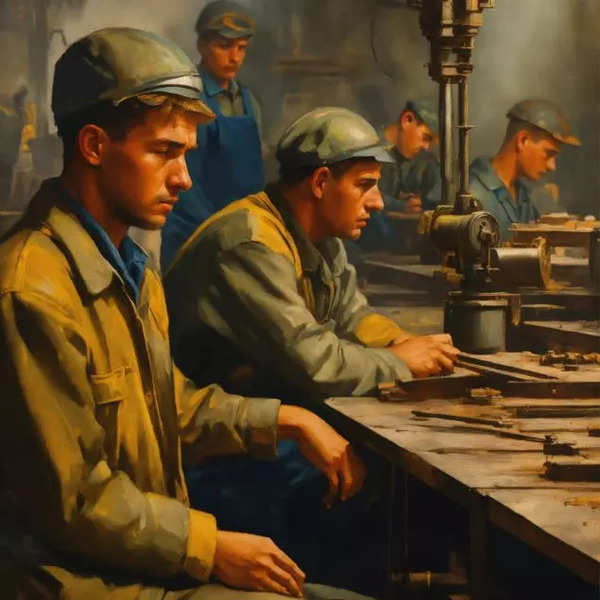
Ah, the industrial revolution. It was a time when humans collectively decided that handmade goods were for amateurs and that steam engines were the future.
Let’s take a light-hearted look back at this era of coal dust, steam engines, and the first examples of “Are we there yet?” From factory workers all over the place.
A brief history (sort of)
Imagine the late 18th century. People were happily spinning wool by hand, but then several inventors said, “What if we let machines do it instead?” The spinning jenny is a highly innovative machine that makes hand-spinning yarn seem like a primitive hobby. If you thought getting a new smartphone was exciting, imagine people’s excitement when they saw a factory machine for the first time. (Spoiler: They weren’t excited. In fact, they were terrified.)

Image credit: lexica.art
Steam Power: Original Energy Drink
Then along came steam power, the caffeine of the industrial revolution. Suddenly everything was powered by steam. Trains, boats, and even my neighbor who kept saying, “I’ll be there soon!” This new energy source provided fuel. The steam engine proved to be highly efficient and could power entire factories, but it also came with great Victorian fears that workers would be replaced by machines. It was like watching your favorite barista be replaced by a vending machine. It’s efficient, but where’s the individuality?

Image credit: lexica.art
Factory: Where dreams (and lunch breaks) go
With the increase in factories, 9-to-5 working hours began. People used to work on a solar schedule, but now they come to work to see if their boss can afford another top hat. Imagine your first day at the factory. “Welcome to your new job!” This is your workstation. By the way, your lunch break is only 15 minutes. Enjoy your day!

Factories were like the fast-food restaurants of the time: efficient, standardized, and even drab. Workers toiled in an environment that would make even the most hardened soul reconsider their career path. Think of it like an all-you-can-eat labor buffet. But there’s more dirt and far fewer dessert choices.
The rise of the urban jungle
As factories sprang up, cities grew like weeds in a garden. People flocked to cities to escape the monotony of life in the countryside, only to find themselves living in cramped, shoebox-like apartments complete with plumbing. Life in the city was different. Bustling markets, cultural diversity, and the occasional horse-drawn carriage that decides to “unload” right in front of you.

Image credit: lexica.art
What about inventions?
Don’t forget to innovate! The Industrial Revolution was like a technical conference on steroids. Cotton gins, steam engines, and even power looms appeared like flashy new products. Everyone was talking about the future, but some were still trying to figure out how to operate the new spinning wheel without accidentally knitting an elephant sweater.

Image credit: lexica.art
Progress or procrastination?
Looking back, the Industrial Revolution was a mix of progress, invention, and a lot of soot. It laid the foundations for the modern world, but it also raised the question: Are we really ready to be replaced by machines? The answer was clearly no. But we dove in headfirst. Who can resist the allure of all things steam-powered?

Image credit: lexica.art
Now, let’s talk about the industrial revolution. It was a time when humans said, “Let’s turn on the machines, forget about fresh air, and see what happens!” We may have acquired factories and trains and made a dubious amount of progress, but we’ve also learned that sometimes it’s good to step away from the machines and just… spin your own wool every once in a while.

